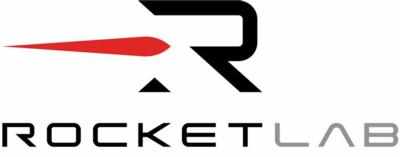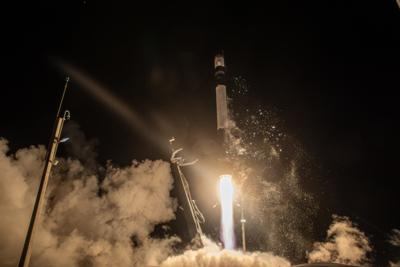Tue, Feb 20, 2024
New Mission Is Designed to Investigate Removing Space Junk from Orbit
Rocket Lab USA recently launched its 44th Electron rocket, successfully deploying an orbital debris inspection satellite for Astroscale Japan Inc.

The mission, named “On Closer Inspection”, launched from Pad B at Rocket Lab’s Launch Complex 1 in New Zealand at 03:52 NZDT February 19th, 2024 (14:52 UTC, February 18th). Electron deployed the Active Debris Removal by Astroscale-Japan (ADRAS-J), a satellite designed to test technologies and operations for approaching and monitoring debris objects in orbit, also known as space junk. The mission is the first phase in assessing the potential for satellites to rendezvous with orbital debris objects in future and assist in de-orbiting them, supporting space sustainability for future generations.
Following the successful launch on Electron, the 150-kilogram ADRAS-J satellite will now approach an aged, derelict rocket stage in orbit to observe it closely, understand how it behaves and determine potential methods for its assisted deorbiting in future. The rocket stage it will be observing is the Japanese H-2A upper stage left in low Earth orbit after the launch of the GOSAT Earth observation satellite in 2009. ADRAS-J will fly around the stage, 11 meters long and four meters in diameter, inspecting it with cameras and sensors. Astroscale’s full mission will take between three and six months to complete.

To enable the ADRAS-J satellite to rendezvous with the derelict H-2A upper stage in orbit, Rocket Lab had to design a mission with strict launch timing and precision orbital deployment parameters. Rocket Lab only received the final perigee, apogee, and inclination from Astroscale 20 days before launch, parameters that are typically determined many months in advance of a launch. Only then could argument of perigee targets for different days within the launch window be selected, essentially determining the timing of Electron Kick Stage burns to facilitate the unique elliptical orbit required depending on the launch date. The mission demanded highly accurate orbital insertion with tighter margins than required on most standard missions. The exact T-0 was only able to be defined the day prior to launch and the required LTAN accuracy only allows for +/- 15 seconds, demonstrating Rocket Lab’s capability to deliver rapid and responsive advanced guidance, navigation and control analysis.
‘On Closer Inspection’ was Rocket Lab’s second launch of 2024 and the Company’s 44th Electron launch overall.
More News
Ultrahigh Frequency (UHF) The frequency band between 300 and 3,000 MHz. The bank of radio frequencies used for military air/ground voice communications. In some instances this may >[...]
During The 7 Second Descent, There Was Another TAWS Alert At Which Time The Engine Remained At Full Power On October 24, 2025 at 2115 mountain daylight time, a Cirrus SR22T, N740TS>[...]
From 2009 (YouTube Edition): Educational Organization Aims to Inspire by Sharing Tuskegee Story Founding leader Don Hinz summarized the Red Tail Project’s mission in simple, >[...]
“This feels like an important step since space travel for people with disabilities is still in its very early days... I’m so thankful and hope it inspires a change in m>[...]
Also: New Katanas, Kern County FD Training, IndiGo’s Botched Roster, MGen. Leavitt Named ERAU Dean The Australian Transportation Safety Bureau (ATSB) has wrapped up its inves>[...]
 ANN's Daily Aero-Term (12.19.25): Ultrahigh Frequency (UHF)
ANN's Daily Aero-Term (12.19.25): Ultrahigh Frequency (UHF) NTSB Prelim: Cirrus Design Corp SR22T
NTSB Prelim: Cirrus Design Corp SR22T Classic Aero-TV: The Red Tail Project--Carrying the Torch of the Tuskegee Airmen
Classic Aero-TV: The Red Tail Project--Carrying the Torch of the Tuskegee Airmen Aero-News: Quote of the Day (12.19.25)
Aero-News: Quote of the Day (12.19.25) Airborne 12.17.25: Skydiver Hooks Tail, Cooper Rotax Mount, NTSB v NDAA
Airborne 12.17.25: Skydiver Hooks Tail, Cooper Rotax Mount, NTSB v NDAA




